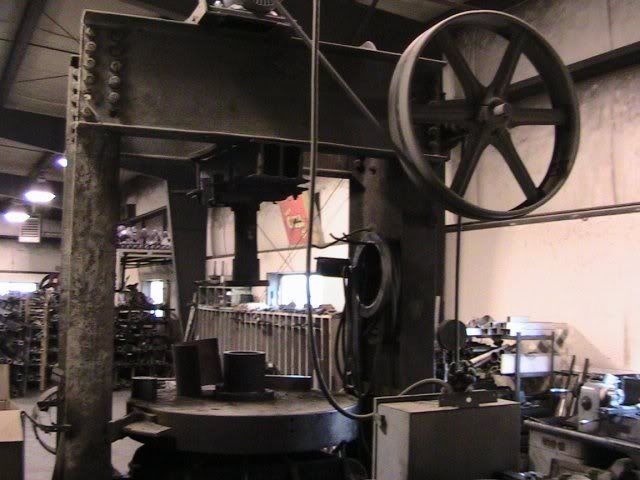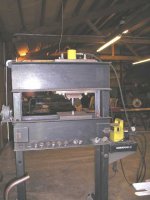Have the opportunity to buy the foundation components for a 200 ton press to include a 6" bore cylinder, 5HP 15K PSI hydraulic power supply and 4 lengths of 1 1/4"X6" mild steel flatbar. I need a press that's happy at 50 tons, but bigger is better right? If I had 200 tons I would redesign some parts to take advantage of that capacity.
Questions I have-
The 6" bore cylinder is 11/16 wall thickness chromed ID. Is this enough safety factor for 15K PSI? Is it feasible to operate that size cylinder on 15K PSI? The cylinder is represented as built for this purpose, I've just never seen a 15K PSI hydraulic system before, not to mention a cylinder this size.
The valving is electric, on the power unit. 15K PSI must require some special plumbing to connect though. Is this a small or a big problem?
I'd like to make the work table adjustable height. Two 2" 4140 pins be adequate here? Or should I go beyond just slipping round pins through at the 200 ton point? I was planning to use a couple pieces of 1 1/4"X10" A36 plate for the table frame and 30" between the uprights.
Questions I have-
The 6" bore cylinder is 11/16 wall thickness chromed ID. Is this enough safety factor for 15K PSI? Is it feasible to operate that size cylinder on 15K PSI? The cylinder is represented as built for this purpose, I've just never seen a 15K PSI hydraulic system before, not to mention a cylinder this size.
The valving is electric, on the power unit. 15K PSI must require some special plumbing to connect though. Is this a small or a big problem?
I'd like to make the work table adjustable height. Two 2" 4140 pins be adequate here? Or should I go beyond just slipping round pins through at the 200 ton point? I was planning to use a couple pieces of 1 1/4"X10" A36 plate for the table frame and 30" between the uprights.



